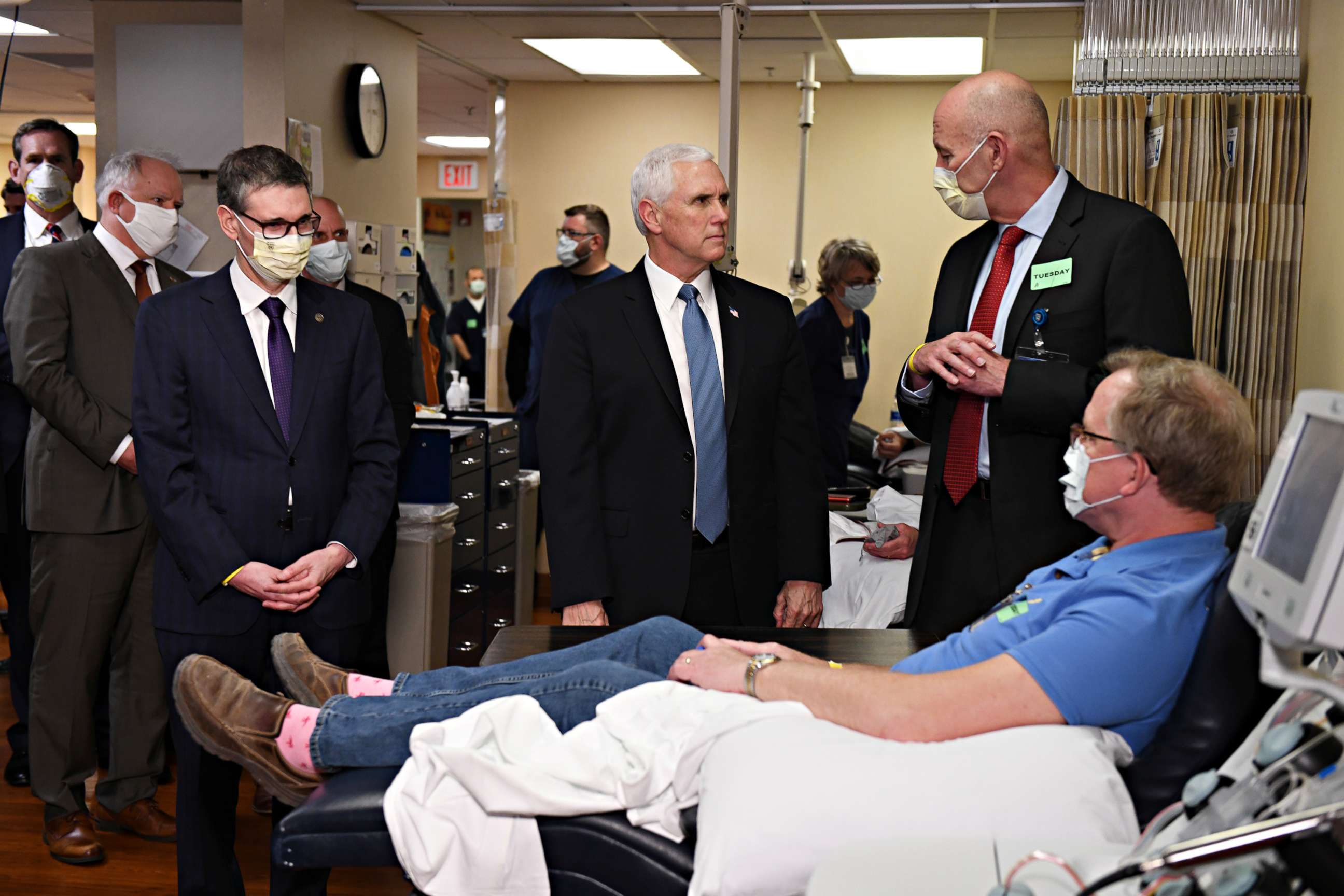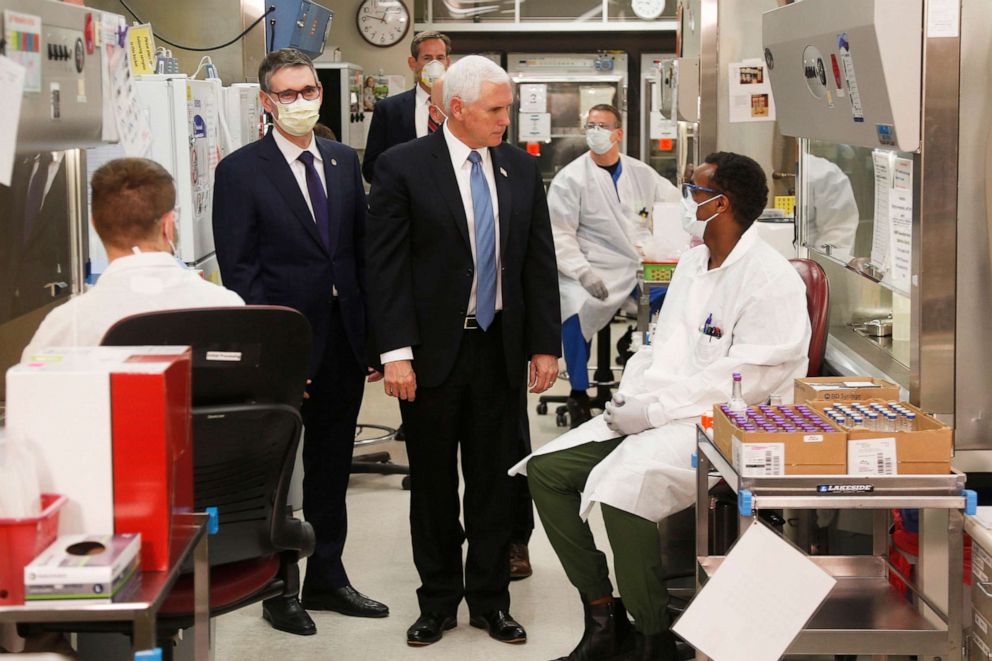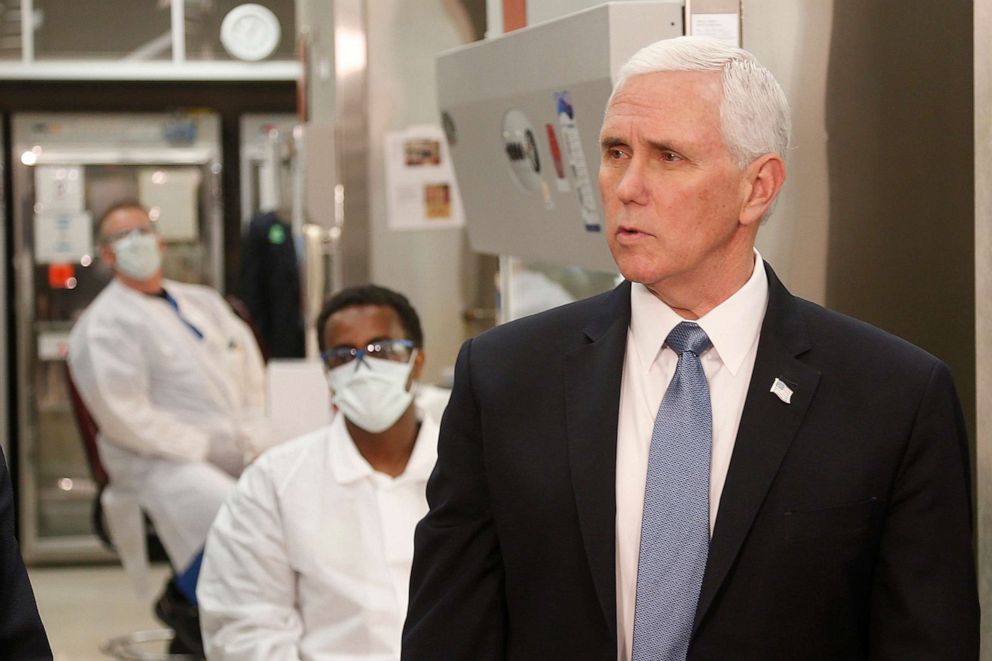Despite policy, Pence goes without mask while visiting patients at Mayo Clinic
The Mayo Clinic said the vice president's office was informed of the policy.
When Vice President Mike Pence, the head of the nation's coronavirus task force, visited the Mayo Clinic Tuesday in Minnesota and greeted patients, he did so without wearing a face mask, even though everyone else around him did.

And that's despite his office being made aware of the Mayo Clinic's policy requiring all patients and visitors to wear face coverings, according to a clinic statement.

Pool video of Pence's visit showed him shaking hands with at least one patient and coming closer than the six feet of separation recommended by White House and Centers for Disease Control and Prevention guidelines.
Tune into ABC at 1 p.m. ET and ABC News Live at 4 p.m. ET every weekday for special coverage of the novel coronavirus with the full ABC News team, including the latest news, context and analysis.
Afterward, Pence responded to a pool reporter's questions about why he didn't wear a mask and how often he was tested.

"Well, let me say, as vice president of the United States, I'm tested for the coronavirus on a regular basis, and everyone who is around me is tested for the coronavirus, and when the CDC issued guidelines about wearing a mask, it was their recognition that people that may have the coronavirus could prevent the possibility of conveying the virus to someone else by wearing a mask," Pence said.
"And since I don't have the coronavirus, I thought it'd be a good opportunity for me to be here, to be able to speak to these researchers these incredible healthcare personnel and look them in the eye and and say thank you."
ABC News has asked Pence's office how often he is tested "on a regular basis."
Health experts, including those on Pence's task force, note that you can test negative for the virus one day, and then become infected the next, possibly without symptoms, and are capable of spreading the virus.
You wear a mask, they say, to protect others.
ABC News' Jordyn Phelps contributed to this report.
What to know about coronavirus:
- How it started and how to protect yourself: coronavirus explained
- What to do if you have symptoms: coronavirus symptoms
- Tracking the spread in the US and Worldwide: coronavirus map




